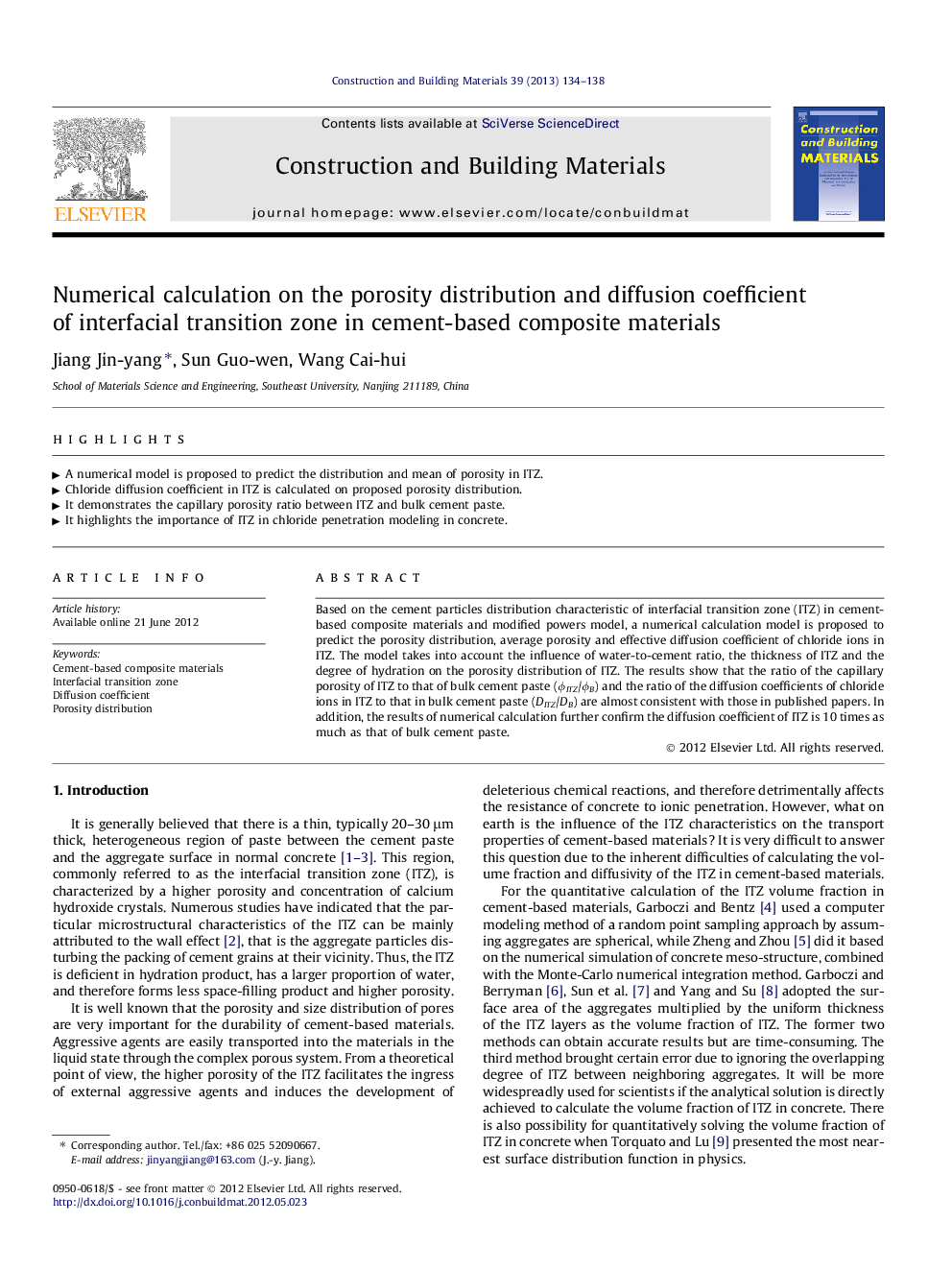| Article ID | Journal | Published Year | Pages | File Type |
|---|---|---|---|---|
| 258487 | Construction and Building Materials | 2013 | 5 Pages |
Based on the cement particles distribution characteristic of interfacial transition zone (ITZ) in cement-based composite materials and modified powers model, a numerical calculation model is proposed to predict the porosity distribution, average porosity and effective diffusion coefficient of chloride ions in ITZ. The model takes into account the influence of water-to-cement ratio, the thickness of ITZ and the degree of hydration on the porosity distribution of ITZ. The results show that the ratio of the capillary porosity of ITZ to that of bulk cement paste (ϕITZ/ϕB) and the ratio of the diffusion coefficients of chloride ions in ITZ to that in bulk cement paste (DITZ/DB) are almost consistent with those in published papers. In addition, the results of numerical calculation further confirm the diffusion coefficient of ITZ is 10 times as much as that of bulk cement paste.
► A numerical model is proposed to predict the distribution and mean of porosity in ITZ. ► Chloride diffusion coefficient in ITZ is calculated on proposed porosity distribution. ► It demonstrates the capillary porosity ratio between ITZ and bulk cement paste. ► It highlights the importance of ITZ in chloride penetration modeling in concrete.
